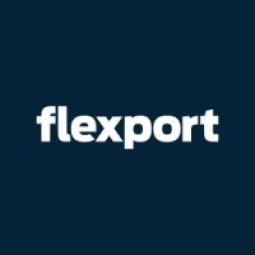Download PDF
How JLab Audio Scaled Shipping Volume 10X Without Expanding Operations
Technology Category
- Platform as a Service (PaaS) - Application Development Platforms
- Sensors - Acoustic Sensors
Applicable Industries
- Consumer Goods
- Retail
Applicable Functions
- Logistics & Transportation
Use Cases
- Last Mile Delivery
- Retail Store Automation
The Challenge
JLab Audio, an award-winning consumer audio brand, faced significant challenges as it experienced a 10x increase in shipment volume from 2012 to 2017. This rapid growth required a tenfold increase in effort to coordinate shipments, consuming valuable time and resources that could have been allocated to strategic initiatives. Additionally, the company's expansion into the competitive retail space necessitated increased coordination among a growing number of stakeholders. Maintaining up-to-date information on shipment status was critical to establishing trust as a reliable vendor. However, working with a traditional freight forwarder exacerbated these challenges, as much of JLab's supply chain was tracked through spreadsheets and email exchanges, rather than real-time updates.
About The Customer
JLab Audio is an award-winning consumer audio brand that experienced rapid growth, with its shipment volume increasing 10x from 2012 to 2017. This growth presented significant challenges, as it required increased effort to coordinate shipments and more coordination among stakeholders. The company's expansion into the competitive retail space also necessitated a reliable and efficient supply chain. However, JLab's traditional freight forwarder was unable to provide the real-time updates and visibility needed to manage this growth effectively.
The Solution
JLab Audio partnered with Flexport, a digital freight forwarding company, to gain the visibility and control it needed to compete with industry giants. Flexport's platform digitizes all shipment documents, notifications, and lifecycle events in a central platform. This digital solution made everything from SKU distribution to landed cost analysis much more efficient. The platform allowed JLab to manage its increased shipment volume without the need for additional headcount or resources. By switching to Flexport, JLab was able to streamline its operations, improve its supply chain visibility, and scale its distribution with ease.
Operational Impact
Quantitative Benefit
Related Case Studies.
.png)
Case Study
Improving Vending Machine Profitability with the Internet of Things (IoT)
The vending industry is undergoing a sea change, taking advantage of new technologies to go beyond just delivering snacks to creating a new retail location. Intelligent vending machines can be found in many public locations as well as company facilities, selling different types of goods and services, including even computer accessories, gold bars, tickets, and office supplies. With increasing sophistication, they may also provide time- and location-based data pertaining to sales, inventory, and customer preferences. But at the end of the day, vending machine operators know greater profitability is driven by higher sales and lower operating costs.

Case Study
Improving Production Line Efficiency with Ethernet Micro RTU Controller
Moxa was asked to provide a connectivity solution for one of the world's leading cosmetics companies. This multinational corporation, with retail presence in 130 countries, 23 global braches, and over 66,000 employees, sought to improve the efficiency of their production process by migrating from manual monitoring to an automatic productivity monitoring system. The production line was being monitored by ABB Real-TPI, a factory information system that offers data collection and analysis to improve plant efficiency. Due to software limitations, the customer needed an OPC server and a corresponding I/O solution to collect data from additional sensor devices for the Real-TPI system. The goal is to enable the factory information system to more thoroughly collect data from every corner of the production line. This will improve its ability to measure Overall Equipment Effectiveness (OEE) and translate into increased production efficiencies. System Requirements • Instant status updates while still consuming minimal bandwidth to relieve strain on limited factory networks • Interoperable with ABB Real-TPI • Small form factor appropriate for deployment where space is scarce • Remote software management and configuration to simplify operations

Case Study
How Sirqul’s IoT Platform is Crafting Carrefour’s New In-Store Experiences
Carrefour Taiwan’s goal is to be completely digital by end of 2018. Out-dated manual methods for analysis and assumptions limited Carrefour’s ability to change the customer experience and were void of real-time decision-making capabilities. Rather than relying solely on sales data, assumptions, and disparate systems, Carrefour Taiwan’s CEO led an initiative to find a connected IoT solution that could give the team the ability to make real-time changes and more informed decisions. Prior to implementing, Carrefour struggled to address their conversion rates and did not have the proper insights into the customer decision-making process nor how to make an immediate impact without losing customer confidence.

Case Study
Digital Retail Security Solutions
Sennco wanted to help its retail customers increase sales and profits by developing an innovative alarm system as opposed to conventional connected alarms that are permanently tethered to display products. These traditional security systems were cumbersome and intrusive to the customer shopping experience. Additionally, they provided no useful data or analytics.







